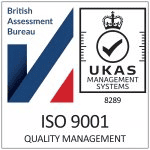

Network Rail has developed an integration facility for the testing and evaluation of European Rail Traffic Management System (ERTMS). This facility consists of a laboratory, a test track and a test train and is known as the European Train Control System (ETCS) National Integration Facility (collectively known as ENIF). The purpose of this facility is to enable integration of component parts of the ERTMS systems, allow components and assemblies to be evaluated in isolation and as a complete system, capture performance data, and support decision making for application designs for parts of the GB railway ERTMS systems rollout.
The ENIF project uses works that were provided by a conventional re-signalling project for making the route bi-directional. Initially a class 313 EMU (No 313121) has been modified and fitted with ETCS equipment for use as a Test Train. The facility includes the provision of a laboratory facility for four ETCS suppliers to demonstration their respective ETCS technology to Network Rail in the Hertford area.

The four ETCS suppliers include:
Vertex employed to develop the safety case and support development of the operational controls and integration of works between the equipment suppliers, Network Rail and Train Operators. The deliverables included:
Our works are ongoing and to date our service has provide the following outputs:
Vertex employed the following competencies during these works:
